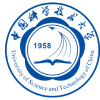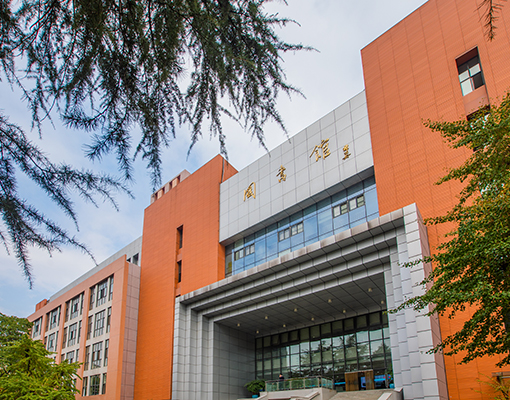No.96, JinZhai Road Baohe District, Hefei, Anhui, 230026, P. R. China
Career Counselling

The University of Science and Technology of China (USTC) is a prominent Chinese University established by the Chinese Academy of Sciences (CAS) in 1958 in Beijing, to serve as a center of excellence in STEM education and research. It is home to 16,718 students, of which 7,426 are undergraduates, with 737 international students (mostly PhD candidates).
Academic and research activities at USTC are organized into 16 Schools, which contain Departments and Centers within them. Most of these (14 out of 16) are related to different fields of science and tech...
| Establishment year | 1958 |
| Total Students | 16,718 |
| International Students | 737 |
| QS World University Rankings 2024 | =137 |
| Campus Size | N/A |
| Total Number of Campuses | 6 |
| University Website | https://en.ustc.edu.cn/ |
| No. of Schools and Divisions | 16 Schools |
| Nobel Prize Winner Alumni | 0 |
| No. of Education Programs | 35 (undergraduate), 115 (Master’s), 94 (PhD) |
| Student to Faculty ratio | 8:1 |
The University of Science and Technology of China offers undergraduate and postgraduate courses through 16 Schools, which are further subdivided into Departments.
Other Schools include the School of the Gifted Young, the School of Mathematical Sciences, the School of Public Affairs, the School of Software Engineering, the National Synchrotron Radiation Laboratory, the State Key Laboratory of Fire Science, and the Institute of Metal Research.
All international applicants to USTC must satisfy the following conditions:
Undergraduate international applicants must satisfy the following additional requirements:
Postgraduate entry requirements are similar to those listed above for UG applicants, but the age criteria are different (maximum age of 40 for Master’s applicants and 45 for PhD candidates), and Bachelor’s / Master’s degree completion certificates must be submitted for Master’s and Doctoral courses respectively. Unlike the process in top universities in other countries, postgraduate applicants need not identify or speak to a research supervisor; the University assigns guides after the interview is successfully completed.
Undergraduate applications to USTC who are not Chinese citizens should complete the following steps:
Postgraduate applicants to USTC follow a similar process while filling the PG application form on the same online portal. However, degree certificate scans must be uploaded instead of high school completion certificates. A research proposal (for PhD candidates) or study proposal (for Master’s applicants) must also be uploaded as part of the application, along with two Letters of Recommendation from professors or industrial mentors. In case the PG course applicant is currently employed in a company, they should also obtain official documents proving the current employment status.
Undergraduate international students at USTC pay flat tuition fees of RMB 26,000 (USD 3,785) per year, irrespective of the course. They also have to pay one time application fees of 800 RMB, and medical insurance fees of RMB 800 per year.
Postgraduate international students pay the same application and insurance fees. Tuition fees for Master’s students for all courses are RMB 30,000 (USD 4,362) per year, and RMB 35,000 (USD 5,089) for PhD courses.
Accommodation fees for dormitories located on campus range from RMB 500 to RMB 1,000 (USD 73 to USD 146) per month. For ten months spent on campus, this comes to a maximum of USD 1,460 per year. This does not include other living costs, like food, travel, academic infrastructure, or personal items.

The University of Science and Technology of China has six campuses in the city of Hefei; these are denoted by directions (e.g. East, North, West, South, Middle). It also has five Institutes in other cities of China, including Beijing, Shanghai, Suzhou, Changchun, and Shenyang.
The campus facilities for food and library usage are significantly better than in many other top universities. There are canteens in every campus location where students can access economical, budget-friendly, and nutritious meals at an average cost of 10 RMB. There are three huge library locations with a total floor area of 35,000 square meters.
Indoor sports facilities are spread across all the main campus locations, with a total of 20 basketball courts, 10 tennis courts, an indoor training venue, 1 badminton complex, 13 volleyball courts and many table tennis rooms. All these have regular opening and closing times, so that students can access sports facilities at any time.
There are also two playgrounds that can be used for track and field events and football (soccer) matches.
There are two large gymnasiums that house the fitness clubs on campus. These have cardio and functional training areas that are open to all students. They also contain halls for group exercise and even dance events, so that students can always find good options to stay active, fit, and healthy. The campus culture encourages walking or riding bicycles to move around, and this is another important component of fitness, though electric scooters and shuttle buses are also allowed.

The Foreign Students’ Association works to provide support to the 700+ international students at USTC. It contains five Departments (Publicity, Culture, Life, Academic Affairs, and Sports), which work together to provide overseas students a voice and to organize cultural activities and events. In addition, there are many student clubs (for example, charity, football, art, debate, and dragon boat) that further improve the quality of extracurricular options at USTC. Student organizations come together to celebrate annual events like the Chinese New Year and the Farewell Party.
Both physical and mental health are given importance at USTC, with the USTC Hospital allowing students to access free medical consultations, and the Mental Health Education and Counseling Center helping students to deal with stress and psychological problems.
The main scholarship for international undergraduate students is the USTC Fellowship. This is awarded at two Levels: Level A provides a full tuition fee waiver, reduced accommodation fees, a yearly stipend of RMB 30,000, and medical insurance. Level B only provides free tuition. Students can apply between November of the year before they wish to enter a UG program at USTC and March of the following year. A detailed application form is to be filled in the scholarship portal. International students can apply for both levels of the USTC Fellowship, though they can only be awarded one.
The USTC Fellowship for Master’s Programs is the main scholarship for international PG students. Level A has the same perks as the undergraduate version, but the yearly stipend is RMB 36,000 instead of RMB 30,000. Level B, in addition to a tuition fee waiver, can also provide a Research Assistance subsidy. The application will need to include two Letters of Recommendation from Professors.
The USTC Fellowship for international PhD students is awarded at three Levels. Level A entails free tuition, accommodation subsidy, and an annual stipend of up to RMB 84,000. Level B is similar to Level A, with a lower annual stipend (RMB 42,000). Level C only awards a tuition fee waiver. The application process is similar to that for Master’s students.
